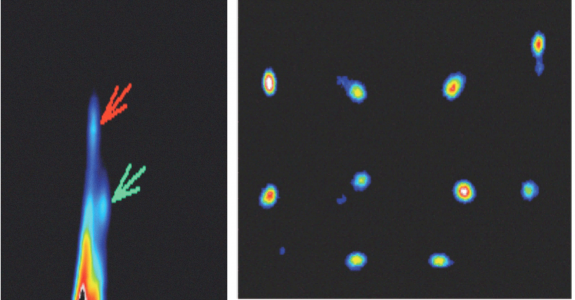Design of DOI PET detector modules using phoswich and SiPMs: First results

| AUTHORS | |
| JOURNAL | IEEE Nuclear Science Symposium Conference Record, 2012 |
| ABSTRACT |
PET detector modules that implement depth of interaction information reduce uncertainties about the actual line-of-response after positron annihilation. This, in turn, has an effect in the spatial resolution and uniformity across the field of view of the reconstructed image. It also has an effect on the system sensitivity since it enables the use of thicker crystal with respect to a non-DOI system without deteriorating significantly the spatial resolution. In this work we evaluate a DOI detector design based on a scintillator phoswich of two types of pixelated crystals with different time decay constants. A matrix of silicon phomultipliers (SiPM) was coupled to this crystal array without any light-guide, and its outputs were connected to an anger logic type of charge divider which outputs were buffered using a transimpedance amplifier.
These position signals were digitized using charge-to-digital converters, and the time decay constant of the crystal of interaction was measured using a delayed charge method. Previous works reported in the literature have demonstrated that this scheme for DOI PET detectors produce very good results in terms of spatial and energy resolution; however, the replacement of PMT with a SiPM matrix introduces some uncertainties that required further study. SiPM have demonstrated their good imaging capabilities when used with pixelated crystal scintillators, and their good timing performance allow us to predict that the DOI resolution was not going to be a problem with this technology. In this work we present quantitative results that assess the goodness of these detectors for its use on small-animal PET scanners. |
| LINK | http://ieeexplore.ieee.org/document/6152597/ |



